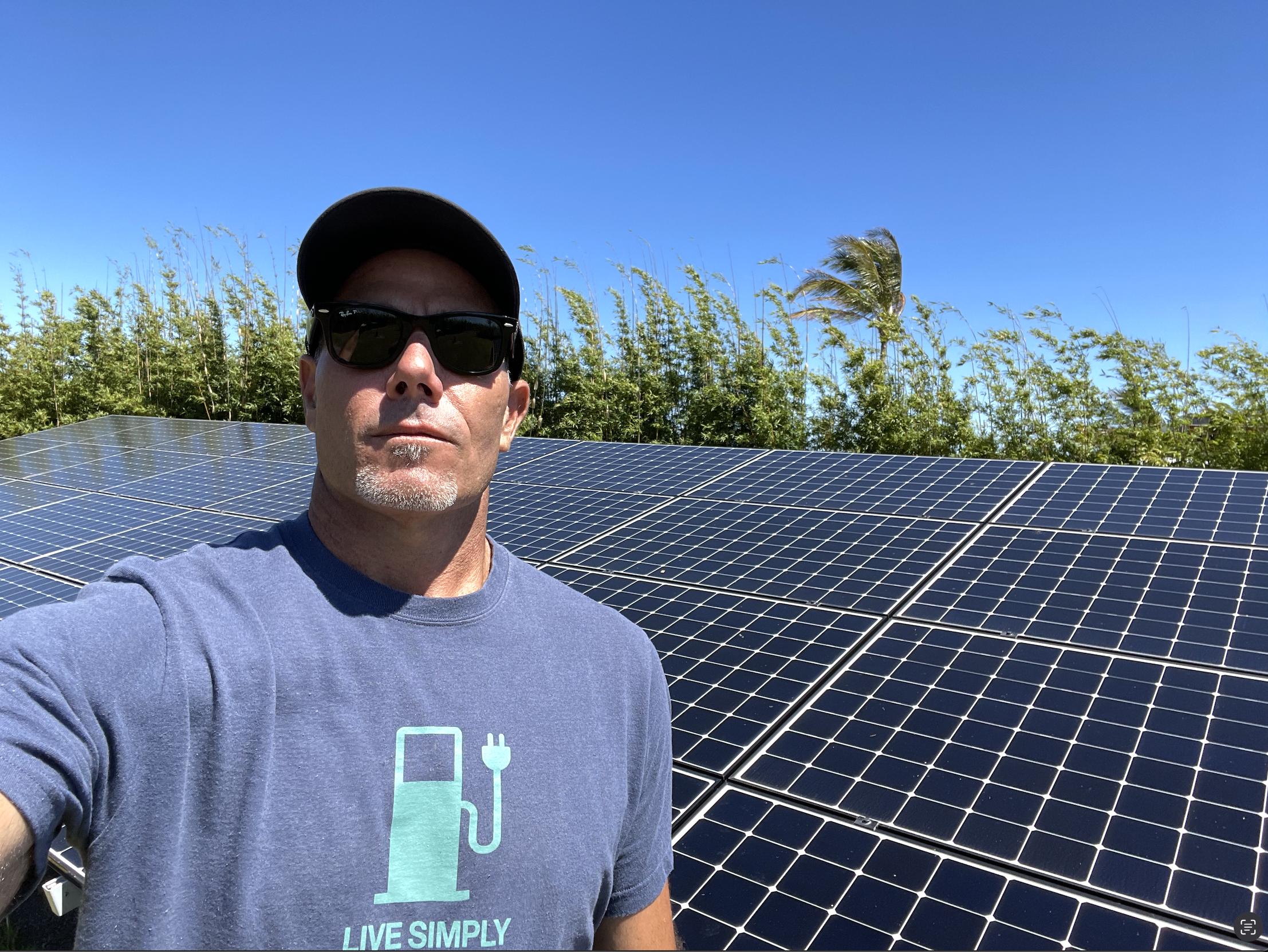Self-Reliance, Sustainability, and Energy Independence
Aloha and welcome.
Self-Reliance, Sustainability, and Energy Independence
In a world where faith in The System often competes with fear of its failure, it's crucial to have a plan—and to be self-reliant. Self-reliance means being able to depend on your own system of survival. This is why I've chosen to invest in solar energy and a battery for my home. Here on Maui we've witnessed the breakdown of these systems during the recent fires and hurricanes, leaving communities without power for days, even weeks. The community was forced to step up and help their neighbor when the government could not. Being self-reliant means having a backup when these systems fail. This is not fear mongering, this is having a plan and doing risk management. Same as how we operate when we head into the ocean for big wave surfing. We have plans and contingency plans. This is also why I hunt. This is why I garden and farm in my backyard. This is why I have egg laying chickens and love to go every weekend to our local farmers market to buy from my neighbors. I look forward to sharing these systems with you in future newsletters and content pieces.
Furthermore, investing in solar energy offers a promising safe return on investment (ROI), especially with available tax credits, the escalating cost of electricity, and abundant sunlight hitting my roof. It's an easy calculation for me, when the cost of doing nothing was too much.
Self-Reliance and Sustainability Defined
Self-reliance emphasizes independence, personal responsibility, and the ability to meet one's own needs without over-reliance on external systems. It encompasses various aspects of life, including food production, energy generation, financial management, and emotional well-being. Sustainability, on the other hand, focuses on meeting present needs without compromising the ability of future generations to meet their own. It involves balancing environmental, social, and economic dimensions to preserve natural resources and maintain economic viability over the long term.
I've found inspiration in Charles Hugh Smith's blog, "Of Two Minds," particularly his insights into self-reliance in the 21st century. Smith highlights the benefits of becoming healthier, reducing waste, and minimizing dependencies on distant supply chains.
He summed up self-reliance in the 21st century perfectly:
"By becoming healthy, we need fewer (ideally zero) medications that are sourced from afar and we’re less dependent on costly medical interventions. By becoming a producer in a local network, we reduce the number of links in our supply chain from many to a few. If we trade for food from local producers, there are only a few links in that supply chain. If we grow some of our own food, there are zero links in that supply chain. By eliminating waste, we reduce our dependence on distant sources of food, energy and water—what I call the FEW essentials. If we eliminate 40% of our consumption, we’ve reduced our dependency on supply chains we don’t control by 40%. By buying durable products that we can repair ourselves, we reduce our dependence on the global system of planned obsolescence and waste that I call the Landfill Economy. The less we need and the less we waste, the lower our dependency on fragile supply chains and the greater our self-reliance. By moving to a location near fresh water, food and energy, we reduce our exposure to the risks of long supply chains breaking down. The more we provide for ourselves, the less we need from unsustainable systems we don’t control. Self-reliance has many other benefits. Self-reliance gives us purpose, meaning, goals, fulfillment, enjoyment and the means to help others.”
When I look at my home or a client’s, I see it as a resource management center. Sun, water, and soil are the primary resources I evaluate, considering their quantity, quality, and how they can be stored and managed.
Inflation and Energy Prices
Inflation has been a pressing concern and top mind, particularly as energy prices rise. The cost of energy directly impacts the production costs of goods and services, contributing to overall inflation. Especially here on Maui, where we feel the effects of being at the end of the supply chain. Energy price inflation hits us instantly. Current prices of gas at Costco, the cheapest on the island, are $4.39 per gallon for the cheap sauce and HECO residential rates are .43 cents a kiloWatt hour. You can almost watch inflation in real time here on the island when geopolitics make waves and ripple through the supply to our beautiful little island home.
Updates and Announcements
Check out our new Maui Energy Advisors website and explore the PV and roofing pricing calculator. MauiEnergy.io
Tesla Powerwall 3 is on its way, with an estimated arrival to Maui by the end of June.
Stay tuned for our podcast on launching on Substack, with highlights shared on various platforms including YouTube, Instagram, and TikTok. I just recorded another
Interested in real estate on the North Shore of Maui? I have two new listings about to go live on the market that I have partnered with Josh Jerman of Hawaii Life on. Message me at shaunlopez@hawaiilife.com for details.
Spring transitions are underway, with our focus shifting to the summer hemisphere. Enjoy the latest forecast Storm Surf video.
Mahalo
Shaun Lopez
shaun@thebuoyreport.com






